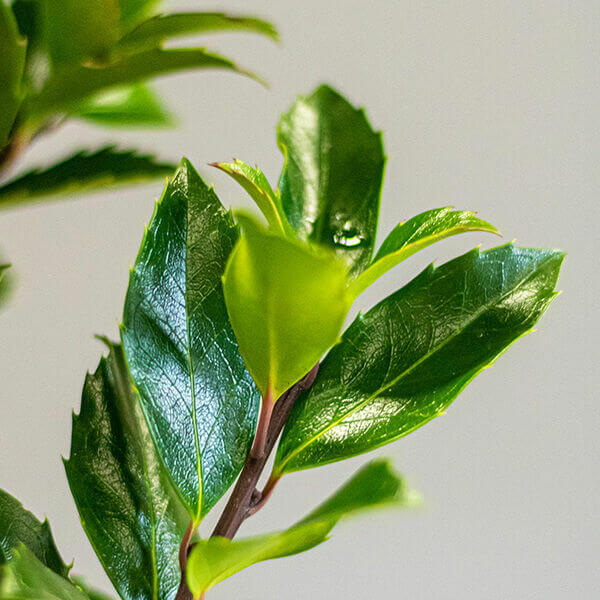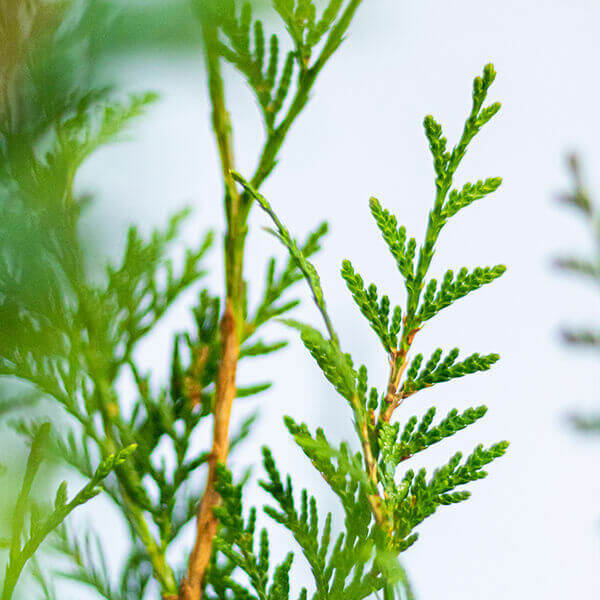Best Hedging Plants For Boundary Marking
Hedge Plants For Summer Blooms
Improve your garden's appeal with rich hedge ranges such as Yew (Taxus), Thuja, Laurel, Photinia, and Bamboo, commemorated for their structural integrity and environmental advantages.
Yew and Thuja offer evergreen protection and winter strength, while Laurel provides quick growth and broad, aromatic leaves.
Photinia includes seasonal appeal with its lively red foliage, and Bamboo lends a low-maintenance, peaceful atmosphere.
These hedges improve air quality, minimize sound, and create tranquil, personal areas.
Proper planting, spacing, and upkeep ensure energetic growth and eco-friendly harmony.
Check out how these lush varieties can raise your garden's appeal and well-being.
Key Takeaways
Change Your Garden With Lush Hedge Ranges
- Select Yew for its dense, evergreen growth and unequaled longevity.
- Choose Laurel for its quick development and broad leaves, making sure quick privacy.
- Choose Photinia for its dynamic seasonal foliage, which turns a striking dark red.
- Use Bamboo for a low-maintenance, winter-hardy hedge with visual appeal.
- Area plants 2-3 per meter and prune frequently for optimum development and health.
Popular Hedge Plants
When changing a garden with lavish hedge ranges, it's vital to consider popular hedge plants such as Yew, Thuja, Laurel, and Photinia due to their unique characteristics and benefits.
Yew (Taxus) is highly respected for its durability and thick, green development, making it a prime option for withstanding landscapes.
Thuja is noted for its evergreen foliage and robust winter resilience.
Photinia adds seasonal vibrancy with red leaves that darken over time, creating vibrant visual appeal.
Laurel uses fast growth and fragrant, broad leaves, ideal for fast personal privacy.
Furthermore, Bamboo is an outstanding choice for atmosphere, using a low-maintenance, winter-hardy choice that improves the garden's aesthetic with its sophisticated, swaying walking canes.
These choices accommodate a variety of horticultural needs and choices.
Advantages of Garden Hedges
Garden hedges provide a wide variety of advantages, making them an important addition to any landscape. These natural barriers are economical to implement and supply considerable wind protection, boosting air flow and adding to sound reduction. The thick foliage of hedges like Thuja and Beech guarantees privacy by blocking visibility, developing a secluded and tranquil environment.
Hedges also play a vital role in microclimate guideline, providing a steady environment that cultivates plant growth and reduces temperature variations. Their intricate leaf structures filter contaminants, enhancing air quality and contributing to a much healthier garden environment.
Moreover, hedges master sound reduction, taking in and deflecting acoustic waves to lower ambient sound levels. This dual functionality of offering both acoustic and visual personal privacy improves the overall serenity and visual appeal of any garden.
Planting and Maintenance Tips
For a successful hedge, precise preparation of the planting location is vital. Make sure the soil has proper pH and drain to support strong root advancement.
Area the plants properly for the chosen species. Water the hedge frequently during its initial growth phase, adjusting as needed with seasonal changes.
Carry out a organized pest control and disease prevention technique, utilizing chemical or organic treatments when required. Routinely examine for aphids, mites, and fungal infections.
Apply mulch to keep moisture and suppress weeds. Seasonal pruning promotes thick development and air blood circulation, necessary for plant health.
Following these standards will assist you cultivate a dynamic, well-kept hedge that improves the beauty of your garden.
Spacing and Cutting Standards
Spacing and Cutting Guidelines
Proper spacing and cutting are important for cultivating healthy, visually appealing hedges. Adequate spacing ensures each plant gets adequate nutrients, light, and airflow.
Follow these standards for ideal hedge maintenance:
- Spacing: Position hedge plants 2-3 plants per meter to encourage robust growth.
- Pruning Methods: Routine pruning is important for maintaining preferred hedge height and shape. Cut new growth in summer season and cut back older wood throughout winter.
- Seasonal Care: Change cutting schedules and approaches according to seasonal requirements to ensure plant health.
- Hedge Height: Frequently screen and cut to preserve the desired hedge height and accomplish consistent aesthetic appeals.
Adhering to these actions will ensure your hedge prospers, enhancing both the appeal and functionality of your garden.
Picking the Right Hedge
Selecting the Right Hedge
Selecting the suitable hedge includes evaluating factors such as fully grown height, foliage density, and ecological strength. Effective hedge plant choice requires understanding each types' growth characteristics and site-specific versatility.
For instance, Yew (Taxus) offers excellent longevity and dense development, while Thuja is noteworthy for its winter resilience. In addition, considering upkeep requirements is crucial; fast-growing types like Laurel or Privet demand routine trimming, whereas low-maintenance choices like Bamboo or Ivy might be more effective for those seeking minimal maintenance.
Environmental factors such as soil type, light schedule, and moisture conditions must also direct the choice process. This mindful approach guarantees the picked hedges will flourish, supplying both practical and visual benefits to the garden landscape.
Shipment and Planting Advice
To ensure your hedge plants prosper, they should be delivered by specialized carriers and planted promptly upon arrival.
Follow these important actions for effective planting:
- Soil Preparation: Improve the soil with raw material to improve drain and nutrient material.
- Planting Depth: Create a trench twice the width and equal to the depth of the root ball.
- Watering Methods: Water completely after planting, keeping the soil regularly damp but not filled.
- Mulching: Use a layer of mulch to retain moisture and suppress weeds.
Client Assistance and Service
Offered the crucial role of timely support in horticultural pursuits, our client assistance group is offered six days a week through telephone, email, and social networks to use skilled suggestions and swiftly address any concerns. Their commitment to quick reaction times guarantees customer complete satisfaction by fixing inquiries associated with plant health, ideal planting techniques, and maintenance schedules.

Response Time
-------------------
This extensive support group, enhanced by an outstanding 9.3/ 10 customer ranking, highlights our commitment to enhancing the gardening experience for every single client.
Regularly Asked Questions
The Length Of Time Does It Take for Hedge Plants to Develop?
Hedge plants typically need one to three years to end up being fully developed, with the exact period differing by species and growing conditions.
Reliable care during this vital duration is important for robust development. Consistent watering, watchful weed control, and proper fertilizer application are pivotal in promoting strong root advancement.
For instance, fast-growing species like Laurel might establish faster, while slower-growing varieties such as Yew might take longer. Persistent upkeep accelerates the establishment process, leading to thick and healthy hedges.
What Are the Best Hedge Plants for Personal Privacy?
The concern of the finest hedge plants for privacy involves assessing evergreen and deciduous alternatives.
Evergreen hedges like Thuja, Laurel, and Cypress provide year-round coverage, guaranteeing constant personal privacy.
On the other hand, deciduous hedges such as Beech use seasonal personal privacy, shedding leaves in colder months.
Key maintenance suggestions for privacy hedges include regular trimming, fertilizing in spring, and appropriate spacing-- usually 2 to 3 plants per meter.
In addition, constant watering and thorough weed elimination are vital for promoting healthy, thick development.
Can Hedge Plants Draw In Wildlife to My Garden?
Yes, hedge plants can draw in wildlife to your garden by offering vital benefits like shelter, food, and nesting sites, thus enhancing local biodiversity. Yew, holly, and laurel are outstanding for drawing in birds, while ivy supports a variety of insects.
Nevertheless, it is necessary to keep in mind that there are some disadvantages, such as increased maintenance to handle insects and regular maintenance. Thoroughly selecting and maintaining hedge ranges can help stabilize these advantages and drawbacks, ultimately cultivating a sustainable and lively ecosystem in your garden.
Are There Any Blooming Hedge Plants Available?
Yes, there are flowering hedge plants readily available that can boost the appeal of your garden.
For instance, Elaeagnus, likewise understood as Olive Willow, produces aromatic white flowers in the fall, adding a touch of beauty.
Photinia, another popular choice, showcases vibrant red leaves that mature into an abundant green, developing a vibrant visual impact throughout the seasons.
To Browse this site guarantee these plants prosper, it's vital to practice appropriate pruning techniques and seasonal maintenance, such as cutting brand-new growth in the summertime and cutting back in the winter season.
These procedures will help maintain the health and aesthetic appeal of your flowering hedges.
How Do I Prevent Insects in My Hedge Plants?
To prevent insects in hedge plants, utilize natural insect control approaches and keep correct hedge care. Present advantageous bugs like ladybugs, which take advantage of hazardous insects, to develop a well balanced community.
Routinely examine your hedges for signs of invasion and promptly remove any afflicted parts to avoid the spread. Make sure the health of your hedges by using balanced fertilizers and providing adequate water.
Utilize mulching to maintain soil wetness and appropriate spacing to decrease plant stress and promote robust development. These practices jointly assist in reducing pest issues and keeping a healthy hedge.
Conclusion
In essence, selecting the right hedge varieties such as Yew, Thuja, and Laurel can change any garden into a serene sanctuary. These plants offer year-round greenery, boost visual appeal, and offer useful advantages like noise decrease and wind defense.
Appropriate planting techniques, precise spacing, consistent watering, and seasonal cutting are essential for ideal growth.
Reputable delivery services and skilled customer assistance guarantee a smooth experience from purchase to planting, making it easier than ever to elevate your outside space.
Garden hedges provide a wide variety of benefits, making them an important addition to any landscape. These natural barriers are economical to implement and supply significant wind defense, enhancing air blood circulation and contributing to noise decrease. The dense foliage of hedges like Thuja and Beech makes sure privacy by blocking visibility, producing a remote and serene environment.

Pruning Strategies: Routine pruning is important for maintaining wanted hedge height and shape. Cut brand-new development in summertime and cut back older wood during winter season.